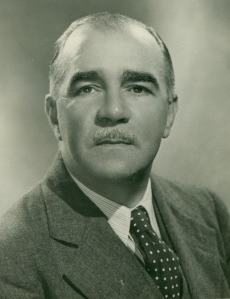It all starts with a donation…
Last week the Center for Media Production donated the projectionist list of35mm films shown at Smith for 1962-1967 and 1976-1977. The lists contain both educational films and popular motion pictures. Here’s a partial listing of the films that were shown during the 1976/1977 academic year:

Projectionist's List 1976/1977 acadmic year
In the early 1930s the Smith Alumnae Quarterly noted that Smith installed a projection booth in Sage Hall for showing films “…of an unusual and experimental nature, that for commercial reasons are not available to the public in an ordinary motion picture theater.” [SAQ Feb 1931].

William Aylotte Orton, professor of economics, 1922-1952
William Orton, professor of economics and sociology was the leading faculty member in this project. His interests in motion pictures was from both an economic and social & cultural perspective. His interests in how people communicated with one another helped form his ideas and opinions about radio broadcasting and the motion picture industries–topics on which he wrote quite extensively. He encouraged the ‘little theater’ movement, and if alive today, would be happy with all the small, independent theaters that are operating in the Pioneer Valley. To learn more about William Orton, please see the finding aid to his papers in the College Archives at:
http://asteria.fivecolleges.edu/findaids/smitharchives/manosca63.html
The Vanderbilt Film Symposium, 1961

Vanderbilt Film Symposium brochure cover, 1961
Film as art and communication continued to interest the Smith community. In January and April 1961, the College sponsored the Vanderbilt Film Symposium and showed films such as Citizen Kane (1941) by Orson Wells, Night Mail (1936) by Basil Wright, Brief Encounter (1946) by David Lean, the Bicycle Thief (1949) by Vitttorio da Sica and talks were given by Arthur L. Mayer, film producer and Robert Gessner, of New York University, the country’s first professor of film. At the spring festival ‘new cinema’ and ‘cinema as art’ were the focus, with Maya Deren, and Jonas Mekas participating in the discussions. John Cassavetes, “Shadows” about interracial friendships and relationships in New York City was a highlight, as were Kurosawa’s “Ikiru”, Polanski’s “Two Men and a Wardrobe” and Sydney Meyer’s “The Savage Eye.”
Did the Vanderbilt Film Symposium “…introduce the Smith community to the rationale of film study…”? Later that year, Arthur L. Mayer attempted to interest Smith in his curricula of film studies, but it does not appear to have taken hold at the time.
Today’s Film Studies department at Smith College offers interdisciplianry courses in the history, theory and production of films. It is cross-listed with many courses in other departments.
The projection and use of movies in both the academic and social settings of Smith have had a interesting career. In a future blog we’ll talk about movies that used the Smith campus as their settings–sometimes with intriguing results.
To learn more about movies and film at Smith, come to the College Archives!



 Posted by smitharchives
Posted by smitharchives